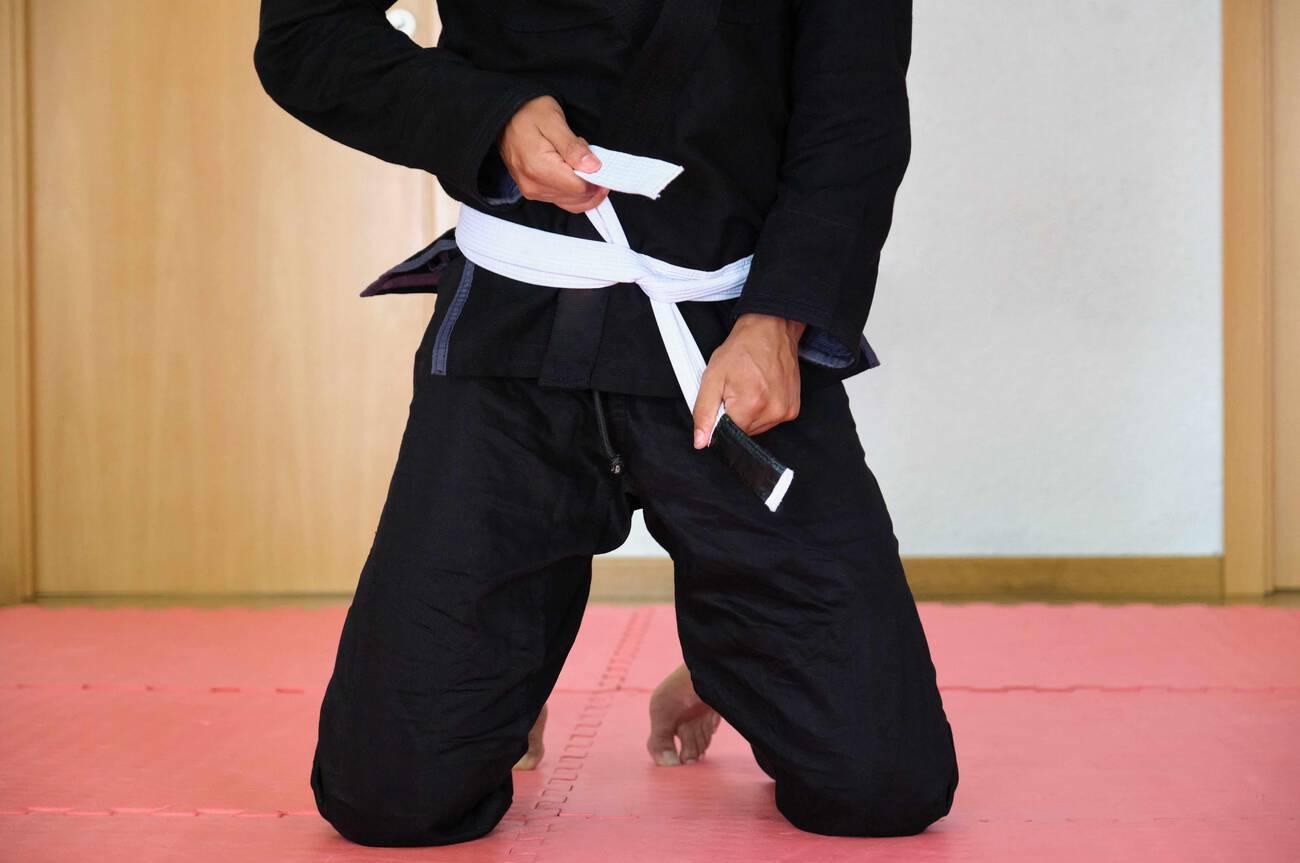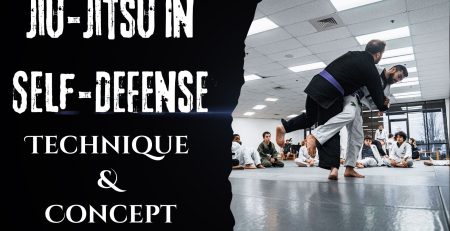Can a White Belt Wear a Black Gi?
Table of Content
- Introduction
- Understanding BJJ Gi Colors
- Traditions and Customs in Brazilian Jiu-Jitsu
- The Debate: Can a White Belt Wear a Black Gi?
- Considerations for Wearing a Black Gi as a White Belt
- Understanding School Rules
- Respecting Tradition and Rank
- Perception and Respect Among Peers
- Pros and Cons of White Belts Wearing Black Gis
- Pros
- Cons
- Conclusion
Introduction
In the colorful tapestry of Brazilian Jiu-Jitsu (BJJ) culture, the choice of gi color is a topic that often sparks debate and discussion. While the traditional white gi is the norm for beginners, some practitioners question whether a white belt should be allowed to wear a black gi. This article aims to delve into this intriguing question, exploring the traditions, customs, and considerations surrounding gi colors in BJJ.
The gi, or kimono, worn in Brazilian Jiu-Jitsu serves not only as a uniform but also as a symbol of the art’s rich history and tradition. Originally derived from the traditional Japanese martial arts attire, the gi has evolved over time to become an integral part of BJJ culture. Its color carries significance, representing various aspects of the practitioner’s journey and level of expertise. Understanding the nuances of gi colors is essential for every BJJ practitioner, as it reflects their commitment to the art and respect for its traditions.
Understanding BJJ Gi Colors
Before diving into the debate, it’s essential to understand the significance of gi colors in BJJ. Traditionally, the BJJ gi was white, a symbol of purity and a blank canvas upon which the journey of the practitioner unfolds. Over time, blue and black gis became more prevalent, each carrying its own symbolism and cultural significance within the BJJ community.
The white gi, often referred to as the “gi of purity,” is typically worn by beginners and symbolizes the innocence and humility of the novice practitioner. As one progresses through the ranks of BJJ, the color of the gi may change, reflecting the practitioner’s increasing skill and experience. Blue gis are commonly worn by practitioners of all levels and are considered a versatile and practical choice for training and competition. Black gis, reserved for higher-ranking practitioners, signify mastery and expertise in the art of Brazilian Jiu-Jitsu.
If you’re interested in exploring the significance of BJJ gi colors, you can dive deeper into the topic with our comprehensive article on BJJ Gi Colors.
Traditions and Customs in Brazilian Jiu-Jitsu
BJJ is steeped in tradition, with customs that honor lineage, rank, and respect for the art. The gi, as the uniform of the practitioner, holds particular importance in this regard. In many academies, the color of the gi signifies the practitioner’s level of experience and expertise, with white belts typically wearing white gis as a symbol of their novice status.
The tradition of wearing a white gi as a white belt dates back to the roots of BJJ, where it was customary for beginners to start their journey with a clean slate, free from preconceptions or expectations. As they progress through the ranks, practitioners may earn the privilege of wearing colored gis, signifying their advancement in skill and knowledge.
The Debate: Can a White Belt Wear a Black Gi?
The question of whether a white belt should wear a black gi is a contentious one in the BJJ community. Some argue that it goes against tradition and disrespects the hierarchy of rank within the art. Others believe that the color of the gi should not dictate a practitioner’s journey and that skill and dedication should be the ultimate markers of progress.
Those in favor of allowing white belts to wear black gis argue that it promotes inclusivity and individual expression within the sport. They believe that practitioners should not be restricted by outdated traditions and that the color of the gi should not determine a practitioner’s worth or ability on the mats.
Considerations for Wearing a Black Gi as a White Belt
Before donning a black gi as a white belt, several considerations should be taken into account. Firstly, practitioners should familiarize themselves with the rules and regulations of their academy regarding gi colors. Some schools may have strict guidelines in place, while others may allow more flexibility.
Additionally, practitioners should consider the cultural and social implications of wearing a black gi as a white belt. While it may be seen as a symbol of confidence and self-assurance by some, it may be viewed as disrespectful or presumptuous by others. Practitioners should weigh these factors carefully and make an informed decision based on their personal values and beliefs.
For those specifically looking for a white gi, Bravo BJJ offers a range of options, including high-quality gis available at a discounted price. You can browse our collection of white gis to find the perfect fit for your training needs. Similarly, if you prefer the sleek and classic look of a black gi, Bravo BJJ also provides a selection of premium black gis at discounted rates. Explore our offerings of black gis to elevate your training experience with style and durability.
Pros and Cons of White Belts Wearing Black Gis
There are both advantages and disadvantages to white belts wearing black gis in BJJ. On one hand, it can be seen as a statement of confidence and commitment, signaling a willingness to embrace the challenges of the art. On the other hand, it may be perceived as disrespectful to the traditions and customs of BJJ, potentially alienating peers and instructors.
Advocates for white belts wearing black gis argue that it promotes a sense of equality and inclusivity within the sport, allowing practitioners to express themselves freely without fear of judgment or discrimination. However, opponents argue that it undermines the hierarchy of rank and diminishes the significance of the black gi as a symbol of mastery and expertise.
Conclusion
In conclusion, the question of whether a white belt can wear a black gi in BJJ is not a straightforward one. While some practitioners may choose to defy tradition and express themselves through their choice of gi color, others may prefer to adhere to established customs and norms. Ultimately, the decision rests with the individual practitioner, guided by respect for the art and its traditions. As BJJ continues to evolve, so too will the attitudes towards gi colors, reflecting the diverse and dynamic nature of the sport.
FAQs Related to “Can a White Belt Wear a Black Gi?”
Q1. Is it against the rules for a white belt to wear a black gi in Brazilian Jiu-Jitsu?
A: While there are no universal rules governing the color of gis in BJJ, individual academies may have their own guidelines regarding gi colors for practitioners of different ranks. It’s essential to check with your academy’s instructors or administrators to determine whether wearing a black gi as a white belt is permissible.
Q2. What are the traditional colors of gis in Brazilian Jiu-Jitsu, and what do they symbolize?
A: Traditionally, white gis symbolize purity and humility and are typically worn by beginners. Blue gis are considered versatile and practical and are worn by practitioners of all levels. Black gis signify mastery and expertise and are typically reserved for higher-ranking practitioners.
Q3. What factors should I consider before wearing a black gi as a white belt?
A: Before wearing a black gi as a white belt, it’s essential to consider the rules and regulations of your academy, as well as the cultural and social implications of your decision. Additionally, think about how wearing a black gi aligns with your personal values and beliefs.
Q4. How do I navigate potential reactions from peers and instructors if I choose to wear a black gi as a white belt?
A: If you decide to wear a black gi as a white belt, be prepared for a range of reactions from your peers and instructors. Some may see it as a statement of confidence and commitment, while others may view it as disrespectful or presumptuous. It’s important to communicate openly and respectfully with those around you about your decision.
Q5. Can wearing a black gi as a white belt affect my progression in Brazilian Jiu-Jitsu?
A: While wearing a black gi as a white belt may not directly impact your progression in BJJ, it’s essential to consider how your choice of gi color aligns with the traditions and customs of the art. Practitioners who show respect for the traditions of BJJ and their academy may find themselves better integrated into the community and more readily accepted by their peers and instructors.
Q6. Are there any practical considerations to keep in mind when wearing a black gi as a white belt?
A: Yes, there are practical aspects to consider when opting for a black gi as a white belt. Firstly, black gis tend to absorb more heat from the sun, making them warmer to wear, especially during outdoor training sessions. Additionally, black gis may fade more noticeably over time compared to lighter-colored gis, requiring extra care during washing to maintain their appearance.
Q7. How can I ensure that wearing a black gi as a white belt is perceived positively by my training partners and instructors?
A: To ensure that wearing a black gi as a white belt is perceived positively, it’s essential to approach the decision with humility and respect. Communicate openly with your training partners and instructors about your reasons for choosing a black gi and be receptive to their feedback. Additionally, demonstrate dedication to your training and a willingness to learn and improve, regardless of the color of your gi.
Q8. Are there any historical or cultural reasons why certain academies may prefer white gis for white belts?
A: Yes, some academies may prefer white gis for white belts due to historical or cultural reasons. In traditional Japanese martial arts, white gis symbolize purity and the beginning of the practitioner’s journey. By adhering to this tradition, academies may seek to instill a sense of humility and respect for the art’s lineage and heritage in their students.
Q9. Can wearing a black gi as a white belt be seen as a form of self-expression or individuality?
A: Yes, for some practitioners, wearing a black gi as a white belt may be a form of self-expression or individuality. By choosing to stand out from the crowd and assert their personal style, these practitioners may be making a statement about their confidence and commitment to their training journey. However, it’s essential to balance self-expression with respect for tradition and the norms of the academy.
Q10. What are some alternatives to wearing a black gi as a white belt for those seeking to express themselves creatively?
A: For practitioners seeking to express themselves creatively while adhering to academy guidelines, there are several alternatives to wearing a black gi as a white belt. Consider customizing your gi with patches or embroidery that reflect your personality or interests. Additionally, experiment with different colors and styles of rashguards or spats worn underneath your gi to add a unique touch to your training attire.














Leave a Reply
You must be logged in to post a comment.